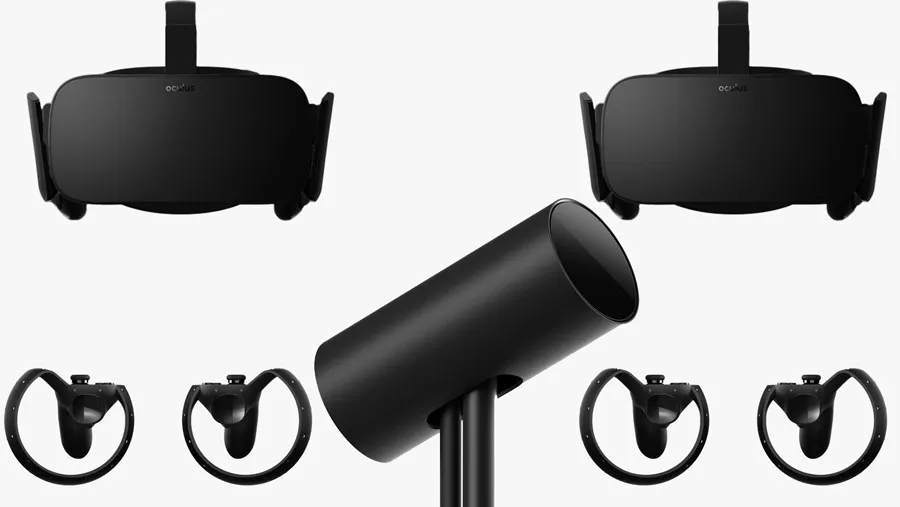Oculus’ positional tracking camera is capable of quite a lot. When Oculus CEO Brendan Iribe first introduced the Oculus Rift CV1 and the new tracking system he mentioned the camera was “capable of tracking multiple objects” a statement that we would later learn likely was aimed towards the Touch controls that were introduced later that morning.
But in the demo room for the Touch controllers we saw a two camera setup leading to questions as to whether two cameras might be required to use the touch controls – with one tracking the controls and the other the headset. Palmer Luckey cleared that notion up for us when we spoke with him at E3 saying, “you could use the Touch controllers and one camera,” adding, “we can distinguish a lot of objects.”
More than just a headset and the controllers? Turns out, yes but it’s not necessarily something they are encouraging.
Read More: Hands on with Oculus’ Touch Controllers
Pressing Palmer further on the topic we were able to confirm that you could run two Oculus Rifts off the same computer and track them separately with the same camera saying “you would be able to do that, technically speaking.”
“Tracking a lot of objects is not something that is hard,” he says. Palmer was careful to add however, “we are not promising this as a feature” of the headset’s tracking system because “considering the rendering requirements of VR it’s just not likely to be a thing that’s popular.”
This is probably true – rendering two separate views of the same VR experience off the same computer would be incredibly taxing for modern hardware. Perhaps in the days of the future where SLI is perfect and Titans are cheap this is something that could be more realistic but for now it is something that will likely be out of the realm of possibility for all but the beefiest of rigs.
Beefy rigs are not something that has shied Oculus away from experimenting, however. We were also able to learn that Oculus is running experiments internally with more cameras and more objects than what we saw at E3, while Palmer didn’t elaborate on these experiments further he did mention, proudly, how efficient the tracking system is.
“Even in the multi camera demos,” Palmer says, “we are well under 1% CPU power, it’s just insignificant to do this kind of math.” Even when adding “more cameras and more objects,” we are guessing something like of four cameras, two headsets, and two sets of controllers, “it is only eating up 5% of one core.”
This is great news for developers who are looking to optimize their VR experiences for consumer hardware. The low cost of the tracking will allow them to better budget resources to other aspects of the experience – like graphical rendering.
Efficiency news aside though the question we still have burning is, just what might those experiments that Oculus is running with multiple cameras and more objects be? Our best guess? A social experience of some kind, given Oculus’ parent company – Facebook. But what do you think?
Tweet us your best guess @UploadVR for a chance to win a FREE ticket to our VR Investor Demo Day event on July 13th at the Computer History Museum.


























